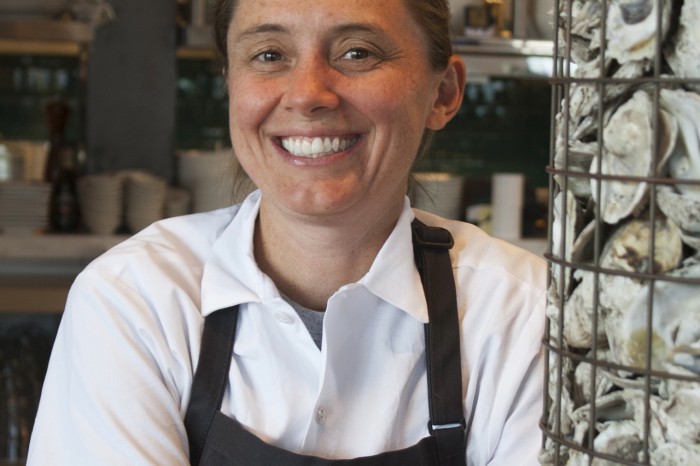Eco: How to Choose More Sustainable Seafood

Jax Fish House & Oyster Bar in Denver consistently wins awards for its seafood. While restaurant fish favorites often include salmon and tuna, it’s often hard to find sustainably sourced varieties of fish like these. With this issue in mind, Jax has made a commitment to sustainability—and has recently partnered with the Monterey Bay Aquarium Seafood Watch to deliver better options on your plate.
Here, we check in with Jax’s Executive Chef Sheila Lucero—who is continually experimenting and serving a wide variety of sustainable seafood such as sturgeon, catfish, and escolar—to learn more about how we can all make better seafood choices, even when cooking at home.
Why is it important for people to consider cooking with more sustainable seafood?
We all need to be mindful of our food choices. If we want to continue to enjoy seafood, and allow seafood to be enjoyed by future generations, we have to consider more sustainable options.
How has Jax partnered with Seafood Watch?
The Monterey Bay Aquarium Seafood Watch is considered the authority on sustainable seafood options. They have created easy to use tools to assist people in choosing sustainable seafood. We wanted to be able to partner with them to help make our voice stronger with our efforts in sourcing sustainably.
How has this focus changed your menu?
Our menus didn’t change much at all. We were already sourcing sustainably. Now, I think we have a greater focus on telling the story of each species we use. We are doing a little more homework so that we can educate or staff and our guests about our efforts.
What are the best questions to ask our fishmonger when shopping for more sustainably sourced seafood?
First, if you have a smartphone, download the Seafood Watch App. It’s a great tool for finding out what your best choices in seafood are as well as where to find locations that offer sustainable seafood. I always ask my fishmonger, “When and where was the fish caught?” I also ask how it was caught. There are plenty of sustainable fish being caught, but if the fishing method is damaging to the environment that species could fall under the “avoid” section.
What do you look for in seafood, to help determine freshness?
If you are purchasing whole fish, look for clear bright eyes. If the eyes appear to be cloudy or dull in appearance the fish is past it’s prime. The same can be said for the exterior of the fish. The skin should be shiny; it should not appear dull in color. If you are able to smell the fish it should smell like the clean ocean water. If it smells overly fishy, or smells slightly of ammonia it is an indication of not being fresh.
Shellfish such as clams and mussels are alive when you purchase them. If they are slightly open, touch or tap the outside of the shell, and if they are alive they will close tightly. Any shellfish that are open, and do not react to your touch are dead and should not be purchased or cooked. Another way to tell, if you have cooked your shellfish and there are few that did not open during the cooking process then they should be discarded as well.
Kamagra oral jelly Online something to buy the most convenient way. He doesn’t demand from you any actions except how to visit the website. And in separate with goods necessary to you to put the end. To specify your address and to wait for the supplier to whom you will give money.


LET'S GET SOCIAL